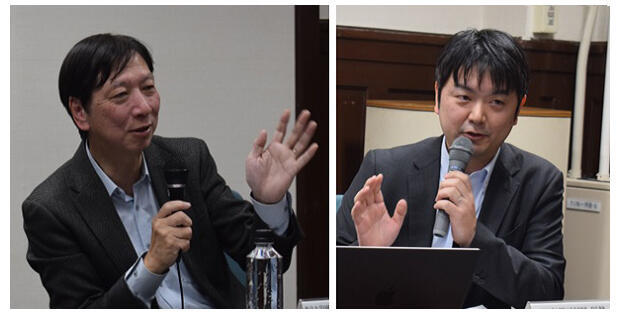Although the crystalline sponge (CS) method, which allows the structural observation of molecules without crystallization, was expected to elicit innovation in various fields, its utilization has been limited. A research team including Distinguished Professor Makoto Fujita from the Tokyo College and Project Lecturer Hiroki Takezawa from the School of Engineering at the University of Tokyo, successfully synthesized a new CS with cage molecules immobilized within it. The research team developed a second-generation CS method that can stably and easily crystallize medium-sized molecules with weights of >1,000.
Fujita commented, "Cage chemistry, which we have been working on for many years, allowed us to eliminate the shortcomings of conventional methods. By applying this technology to trace amounts of active compounds, it will be possible to develop a new platform for drug discovery."
The results were published in Nature Chemistry.

The conventional CS method involves soaking sample molecules into a sponge-like crystal with countless nanometer-scale pores and forcing them to form a regular array, enabling the structural analysis of difficult-to-crystallize molecules. However, this method was limited to hydrophobic molecules with a weight of approximately 300 or less and required advanced techniques. Hence, its application in diverse fields was limited.
The second-generation CS method involves placing anionic organic molecules that interact with the outside and molecular cages into a solution and then adding and mixing analyte molecules. When left at room temperature for a day, the cage molecules incorporate the target molecules and form a crystal structure. This makes it possible to analyze compounds with a molecular weight of 1,000 or more as well as those with various properties, such as hydrophobicity, amphiphilicity, and hydrophilicity. The second-generation CS method easily creates low-symmetry porous crystals that suppress disorder in the molecular arrangement and are suitable for structural analysis by combining an optimal symmetry mismatch strategy between molecular cages and anionic organic molecules that interact with the outside. The method also enables the utilization of the molecular recognition ability of molecular cages to realize structural analysis of various molecules.
Fujita added, "If the combination of a molecular cage and an anion has a high symmetry, X-ray crystal structure analysis becomes impossible. Meanwhile, if the symmetry is too low, a crystal structure is not formed. Hence, this time, we tried the second least symmetric combination and were very surprised to find that we were able to create an optimal structure for analysis."
The research team developed a method using capillaries (thin glass tubes) to easily produce crystals even in small quantities. A drop of a solution containing the sample is introduced into a capillary via capillary action and then dried to obtain a droplet containing the sample inside the capillary. Then, a molecular cage and an organic anion are introduced into the capillary and left at room temperature to obtain CS crystals. While the sample is still in the capillary, X-ray single crystal analysis is performed to determine the structure of the sample.
This technique makes it possible for anyone to easily determine the structure of a sample using extremely small amounts (at the microgram scale). In fact, within a few months, the researchers have succeeded in determining the structures of more than 100 steroids and steroid precursors with molecular weights of 400 to 1200, water-soluble natural products such as peptides and polyethers, alkaloid/nitrogen-containing compounds, terpenoids, and other natural products.
Takezawa said, "Even if a molecule protrudes from the cage, we can still analyze it as long as the crystal structure is determined. Thus, we are also considering the analysis of molecules with a weight of 2,000 or more."
Fujita continued, "When we introduced the technology at a closed-door symposium for companies in the Social Collaboration Course, it was extremely well received. Since last fiscal year, with the assistance of AMED, the research team has been working on a project to build the world's only integrated molecular structure analysis center, with the CS method at its core, bringing together academia, startups, and partner companies (14 companies)."
"There are many substances in local hormones, metabolomes, and active natural products that were too small to be structurally analyzed. The CS method can lift this veil. We are currently capable of analyzing trace sample amounts (less than a microgram), and we hope to determine the structure of trace materials at the nanogram and picogram levels within two to three years through this project," he said enthusiastically.
Journal Information
Publication: Nature Chemistry
Title: Supramolecular coordination cages as crystalline sponges through a symmetry mismatch strategy
DOI: 10.1038/s41557-025-01750-x
This article has been translated by JST with permission from The Science News Ltd. (https://sci-news.co.jp/). Unauthorized reproduction of the article and photographs is prohibited.




